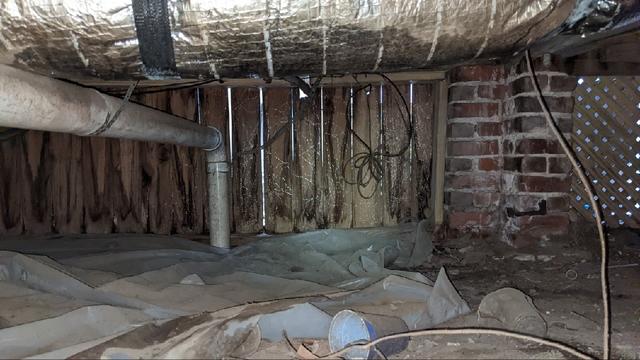
Lattice Allows Humid Air in
Crawl spaces with decorative lattice around the home to cover the crawl space openings allows hot humid air to freely enter the crawl space. The cool air ducts then act similarly to a cold water bottle on a summer's day and water droplets form on any cool surface like the air ducts or the subfloor.
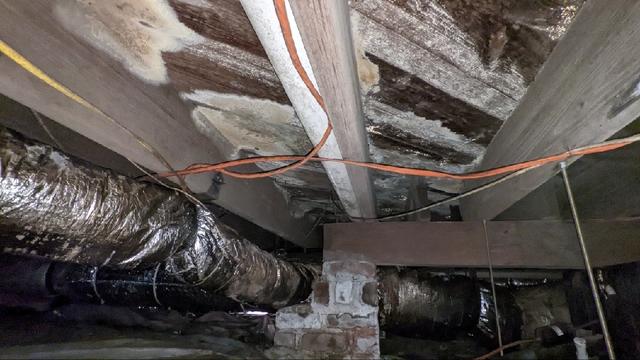
Subfloor Mold
The hot humid air was sticking to the cold underside of the floor, causing mold growth. One might think subfloor insulation may help - but instead of helping, subfloor insulation traps or holds moisture directly against the wood.

High Humidity Measurement
There was nearly 80% humidity in the crawl space at the time of the inspection.
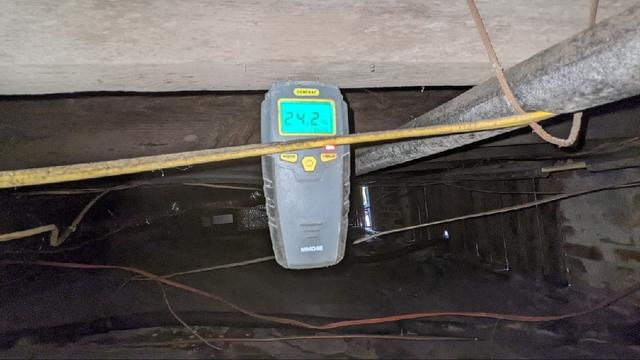
High Wood Moisture Measurement
The wood moisture was reading at about 24%
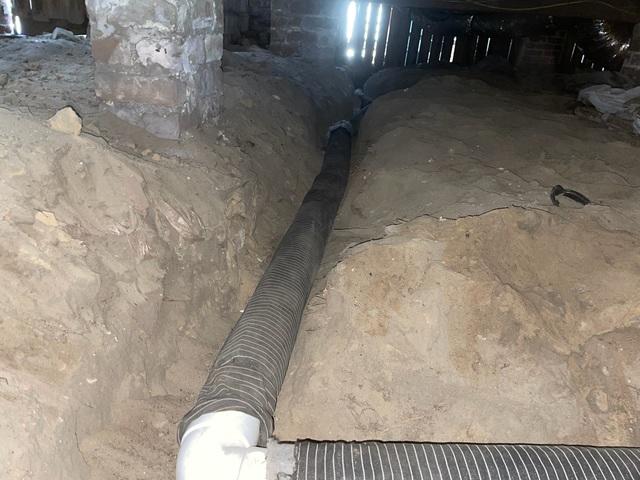
Perimeter Drainage System Installed
As a part of the first step of installing this CleanSpace Encapsulation System, our team installed a drainage system that follows the perimeter of the space. Drainage rock is used over this to hold it in place and aid drainage.
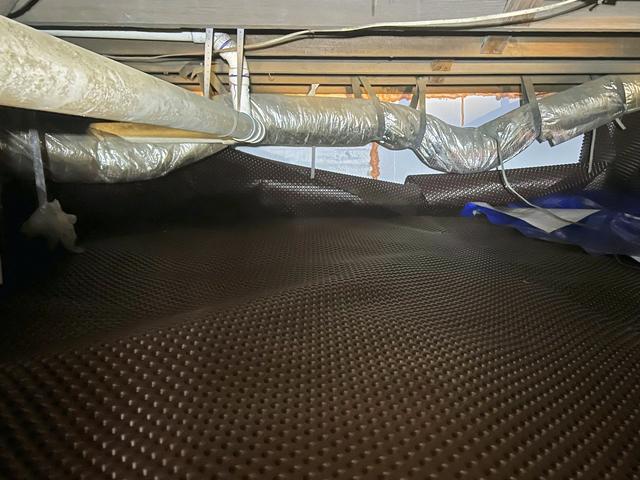
Drainage Matting Layer Installed
The drainage matting layer is installed to aid drainage to the waterproofing system.
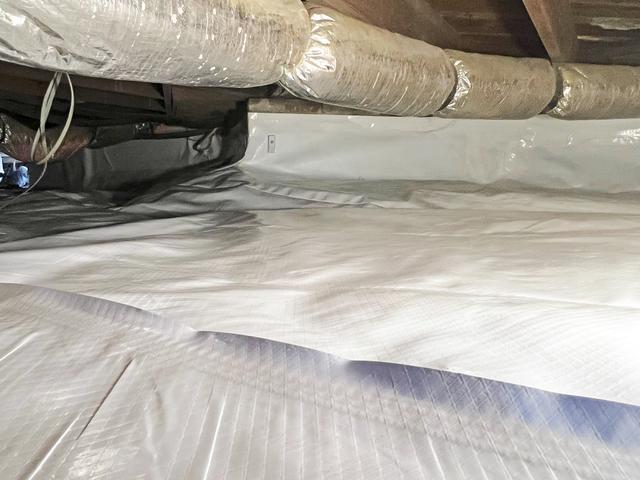
Vapor Barrier Installed
Here is a view of the space after being encapsulated. There was a remote hygrometer installed that is visible on the corner of the wall. the homeowner can use this to view the current moisture level without having to enter the crawl space.
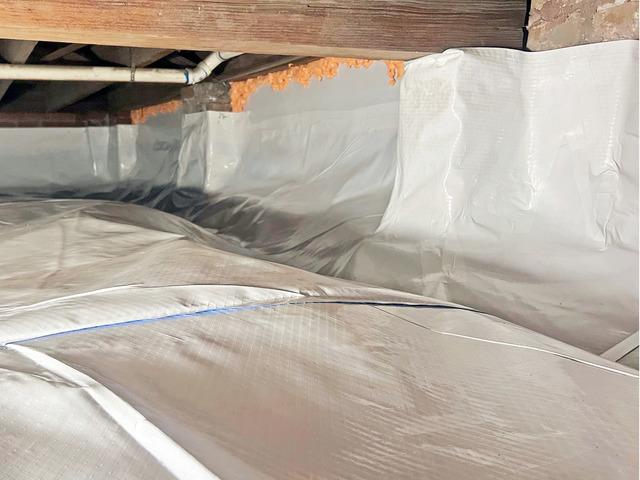
Lattice Openings Sealed
The lattice openings to the outside air were sealed with Foamax wall barrier, providing both moisture protection and insulative value.
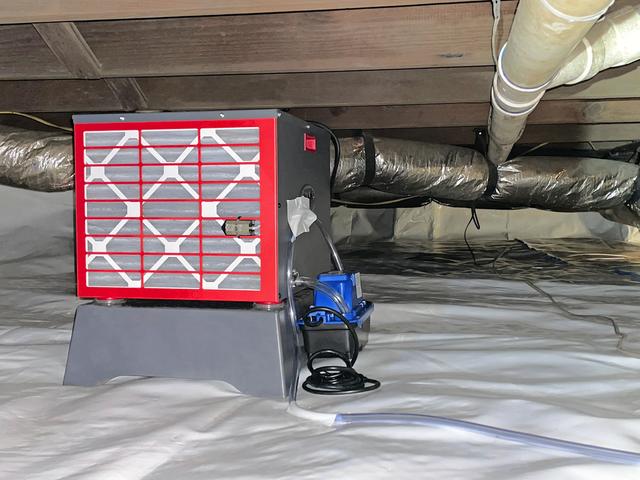
SaniDry Sedona Dehumidifier
A SaniDry Sedona Dehumidifier was installed to constantly monitor and reduce the humidity level as needed.
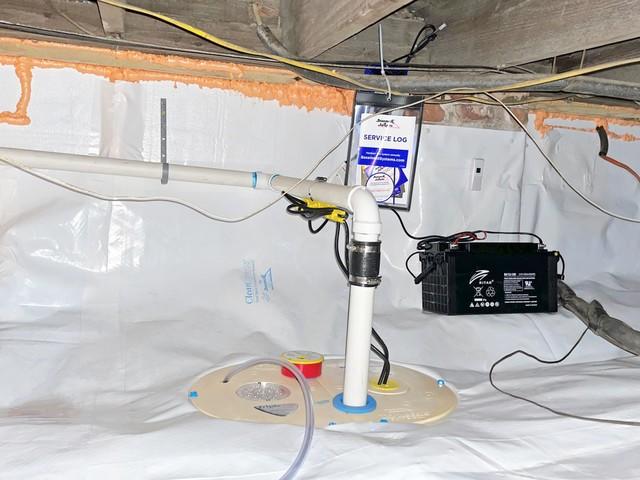
Sump Pump Installed
The drainage system under the CleanSpace Vapor Barrier leads into the sump pump here to remove water that seeps into the crawl space during heavy rains.



.png)

